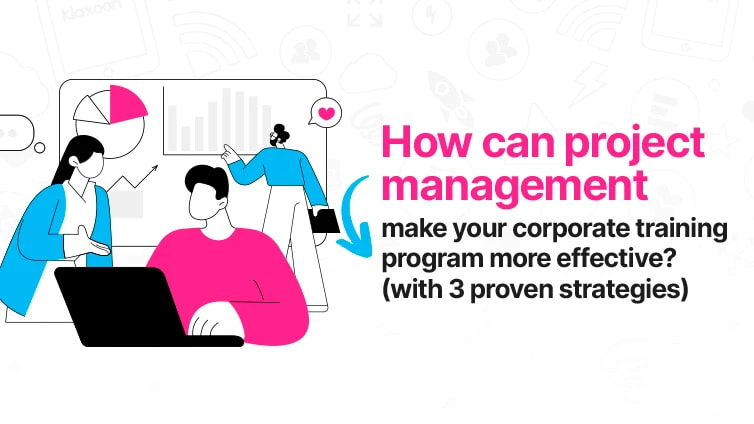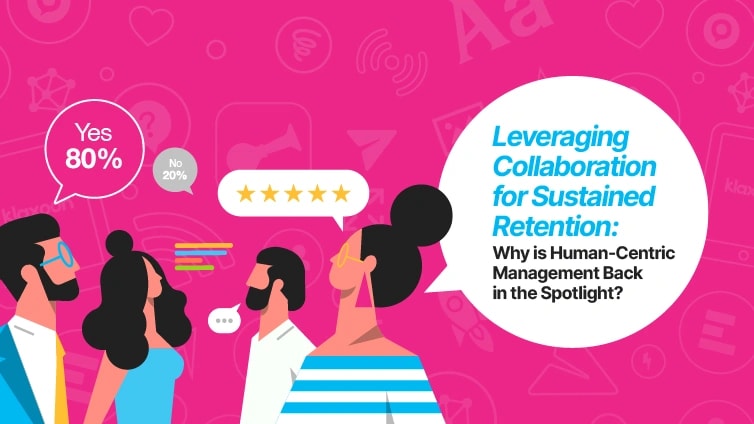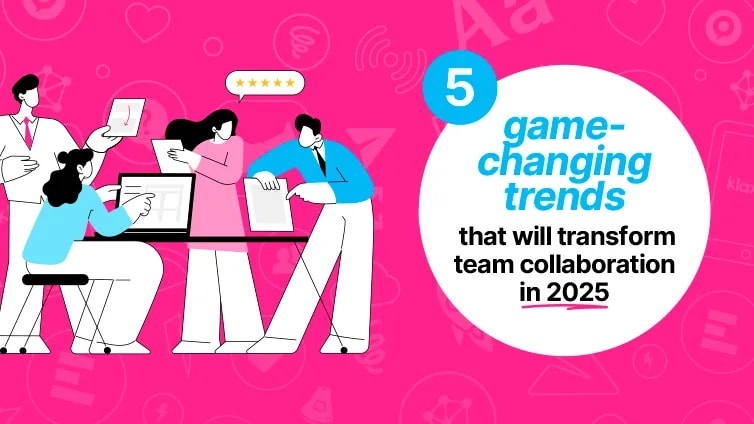6 tips for seamlessly integrating on-the-job training in your projects
Executive summary:
Your business is like a race car. Every component must work in harmony to maintain speed and stay ahead of the competition.
But what happens when your pit crew lacks the skills to keep things running smoothly? On-the-job training is that quick yet effective tune-up, empowering employees to gain key skills without getting off track.
To keep the spirit of innovation alive in your company, you need a strategy that integrates learning into everyday tasks and project management.
The following tips will help you build a workforce that is agile, efficient, and always prepared for the next challenges:
- Set SMART goals and make training outcomes visible with shared dashboards to ensure every effort contributes to the project’s success.
- Break learning into smaller, digestible modules that align with project milestones. Use agile methodologies to integrate feedback and keep progress on track.
- Build learning opportunities into daily workflows. Microlearning, peer shadowing, and task-specific coaching keep training relevant and engaging.
- Tools like digital whiteboards and surveys transform training into an interactive experience, keeping employees involved and motivated.
- Assign senior staff to mentor employees, reinforcing learning with practical insights and experience.
- Measure how training impacts project outcomes. Look at both hard and soft skills to ensure tangible results.

Learn how to apply project management strategies to your corporate training programs to increase their effectiveness.

According to The HR Digest, businesses that prioritize employee development see a 58% jump in retention and a 24% boost in productivity. However, lack of time is still one of the top reasons why employees end up missing out on corporate training sessions.
This is where on-the-job training flips the script. Your team gets to learn the exact skills they need while knocking out key deliverables. Real-time learning keeps your team ahead of the curve, agile, and ready for any market challenge.
The truth is: The old “train them later” mindset is dead. Markets are changing faster than a speeding bullet, and if your team is not learning on the fly, your business will be affected. On-the-job training is about skills, growth, and staying competitive when others are hitting the brakes.
In this article, you will get 6 strategies to seamlessly bake training into your projects. These tips are practical, actionable, and designed to give you a real edge.
Why on-the-job training matters
Often associated with Albert Bandura's Social Learning Theory, on-the-job training highlights the importance of learning through observation and practical application. This approach accelerates skill development while fostering collaboration and adaptability within teams.
On-the-job training is therefore one of the most effective ways to help people develop their skills while still completing project-related tasks on time. All teams do this without always knowing it, but if you don't formalize this type of action in your project management, you risk slowing down your teams and making them less agile and responsive.
By weaving training into everyday tasks, employees gain practical skills and confidence while hitting the mark of their duties. When this step is overlooked, it can leave teams feeling unsupported and put organizations at risk of falling behind.
Who benefits most from on-the-job training
On-the-job training is not a one-size-fits-all solution. It is a dynamic approach that caters to various roles and scenarios. Here is a closer look at who benefits the most from this type of training model:
- New hires: On-the-job training helps new employees get up to speed quickly by learning in real-world scenarios, building confidence, and adapting to company workflows.
- Team members transitioning roles: Employees taking on new responsibilities benefit from practical training tailored to their specific tasks, making transitions smoother and more effective.
- Organizations with rapidly evolving projects: Teams working on dynamic or high-stakes projects gain the flexibility and hands-on expertise needed to adapt and meet goals without downtime.
- Managers and senior leaders: Mentoring through on-the-job training allows experienced team members to transfer knowledge, build trust, and strengthen team collaboration.
- Companies focused on growth: Businesses aiming to remain competitive benefit from building a skilled, adaptable workforce that thrives under changing conditions.

In a context of talent shortage, learn how to retain your employees by putting people back at the heart of your organization.

Integrating on-the-job training into your projects: 6 practical tips for seamless learning and collaboration
1. Set goals that drive success
Goals are a declaration of intent, a way to impose order on chaos. Without a clear aim, your team will have to work in confusion, unsure of whether they are progressing or simply spinning their wheels. Goals tied to project milestones provide structure, ensuring every action serves a greater purpose.
The SMART framework brings discipline to goal-setting and transforms vague ambitions into a concrete plan of action. Here is the breakdown.
- Specific: Be precise. Ambiguity breeds confusion, but clarity sparks motivation. Don’t just aim to “improve communication”; commit to “holding weekly debriefs to align priorities.”
- Measurable: Define what success looks like. Numbers don’t lie, and they allow you to track progress. For instance, “Complete two training modules and apply one new technique by month’s end.”
- Achievable: Set the bar high enough to inspire effort but not so high that it invites resentment. Progress is built incrementally, one step at a time.
- Relevant: Tie your goals to the broader mission. Every objective must have a direct connection to the project’s overall success. Otherwise, it risks becoming a distraction.
- Time-bound: A goal without a deadline is a wish. Deadlines create urgency, and urgency fuels action. For example, “Master the first module within the next 14 days.”
2. Build training into every step
In any field, practice is more than simply repeating the same actions—it is an opportunity to listen, learn, and improve with each repetition. The same principle applies to training. Small, focused steps are the foundation of meaningful progress.
Training should feel like part of the workflow, not an extra task. To make this happen, break big goals into smaller, actionable steps that sync with your project milestones.
Think of it like learning a song on an instrument. You don’t sit down and play the entire piece flawlessly right away. Instead, you take it measure by measure, letting repetition build muscle memory and skill over time. This approach creates space for your team to grow steadily without feeling overwhelmed.
3. Supercharge engagement with collaboration tools
People learn best when they are actively engaged and fully immersed in the process rather than passively taking in information. Collaboration tools like digital whiteboards, quizzes, and surveys bring training to life, transforming it into a hands-on experience that sticks.
These tools stir creativity, encourage teamwork, and make learning enjoyable. Here are a few examples of tools that can elevate engagement:
- Digital whiteboards: They create real-time collaboration by letting team members brainstorm, sketch ideas, and map out solutions together. These tools bring everyone into the creative process, no matter where they are.
- Interactive quizzes: They reinforce key lessons with quick, engaging tests of knowledge in a low-pressure and fun way, while helping employees retain information more effectively.
- Surveys and polls: They gauge team understanding or effectively gather feedback on training actions. These tools encourage participation and give everyone a voice, creating a more inclusive learning environment.
- Gamified pathways: They provide an immersive and challenging environment to improve any skill in a fast and interactive way.
- Video conferencing features: They allow teams to use breakout rooms, screen sharing, or visual management tools to create highly interactive training that mimic in-person collaboration. This keeps hybrid teams engaged and connected.
4. Empower leaders as mentors
According to HBR, 75% of executives attribute their achievements to mentorship, and recent studies reveal that 90% of employees with a career mentor report higher job satisfaction.
As Bob Proctor said, “A mentor is someone who sees more talent and ability within you than you see in yourself and helps bring it out of you.”
This is priceless. When you view it this way, the return on investment comes in the form of appreciation and motivated employees. This may sound like nonsense to some. However, it is this very notion that retains top performers in a company and pushes those who have room to improve and flourish.
At some point, everyone needs guidance, and this is where managers and senior team members play a pivotal role as mentors. When leaders share their experiences and insights, they spark a ripple effect of growth and empowerment across the team.
5. Measure what matters: Training effectiveness and ROI
Appreciative employees are one thing. How can you actually measure the ROI for training?
Tracking metrics like productivity, skill development, and project outcomes is a good place to start. But don’t just focus on hard skills. Soft skills like communication, teamwork, and EQ (Emotional Intelligence) are equally important.
When you take the time to measure all of these elements, you will see the bigger picture. Here is a breakdown of these capabilities and how to measure them for ROI:
Hard skills
Hard skills are the technical abilities employees gain to perform specific tasks, such as coding, data analysis, or using specialized tools.
Measuring ROI for hard skills is straightforward: track improvements in productivity, task accuracy, and project efficiency. For example, compare the time it took to complete tasks before and after training or monitor the quality of deliverables.
Soft skills
Soft skills, such as communication, teamwork, and emotional intelligence, have a less direct but equally powerful impact on ROI.
Effective communication encourages collaboration and reduces misunderstandings, leading to smoother project execution. Additionally, employees who feel a sense of fulfillment and purpose tend to work more cohesively, contributing to a culture of trust and shared success.
6. Cultivate a learning-first culture
Dr. Carol Dweck’s research on growth mindset shows that people who believe their abilities can improve through effort and learning are more likely to succeed.
However, a growth mindset is not simply a wishful ideal. It is a way of approaching work and life that drives real progress. Teams with this mindset can approach setbacks as opportunities to improve whilst building a culture that makes learning a tangible, ongoing process. Here are some quick tips:
Celebrate milestones
Recognize and reward progress at every step, whether it is an employee mastering a complex skill or a team successfully completing a project ahead of schedule.
Celebrations can be as simple as a shoutout during a meeting or as grand as hosting a team lunch. This acknowledgment reinforces the value of learning and motivates employees to keep striving for excellence.
Use tools like gamification
Add elements of play to make growth engaging and rewarding. Create leaderboards for completed training sessions or offer badges for achieving specific milestones.
By tapping into employees’ natural competitiveness and desire for recognition, gamification transforms learning from a task into an enjoyable challenge that builds momentum.
Include reflection periods
Carve out time during project reviews to reflect on lessons learned and areas for growth. Encourage teams to discuss what went well, what could have been done differently, and how newly acquired skills made an impact.
These reflection periods present opportunities for continuous improvement for future projects.
Conclusion
In the ceaseless march of deadlines and deliverables, training often feels like an indulgence, something to be set aside for quieter days that never come. Yet without it, the machinery of progress falters. Skills grow stale, teamwork unravels, and inefficiency seeps in like a slow tide.
But when on-the-job training is thoughtfully woven into the fabric of daily work, it transforms everything. It becomes the quiet architect of innovation, the unseen force that turns struggle into strength and routine into mastery.
What does it take? It takes intention. Goals that guide like stars and systems that allow learning to breathe naturally within the rhythm of work. It takes tools that inspire engagement, mentors who ignite potential, and a work culture that sees effective collaboration as the only true currency.

Discover the 5 key team collaboration trends that will transform your organization’s engagement and effectiveness in 2025.

Unlock your teamwork potential
For free, make your first steps to top-tier work efficiency with the Klaxoon Work Collaboration Platform.